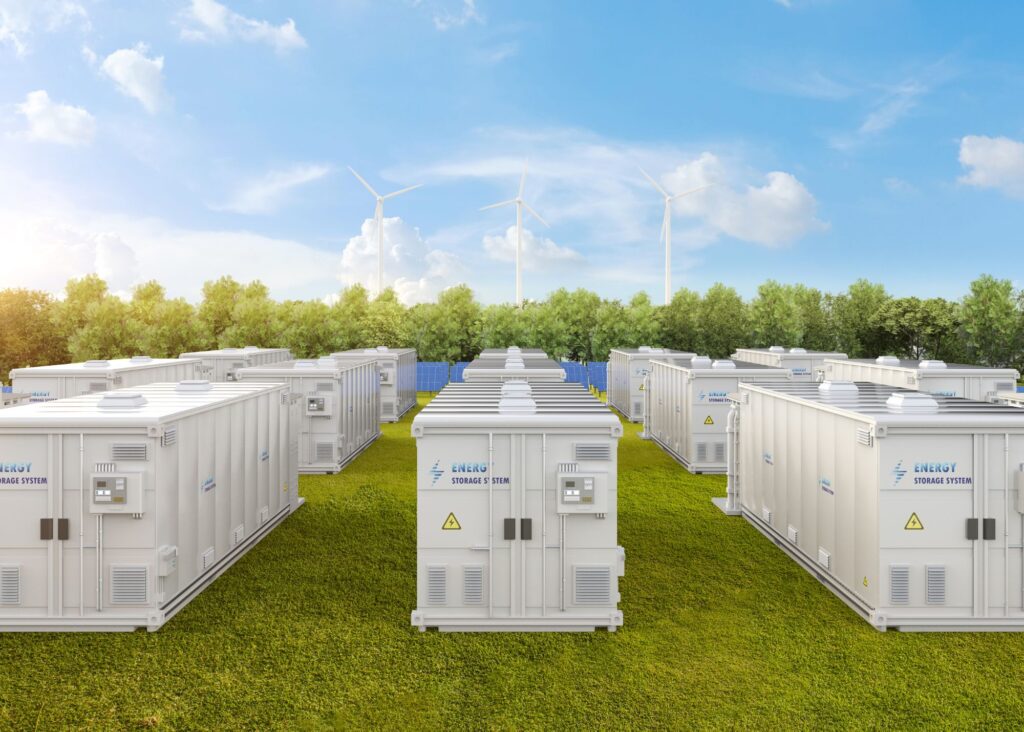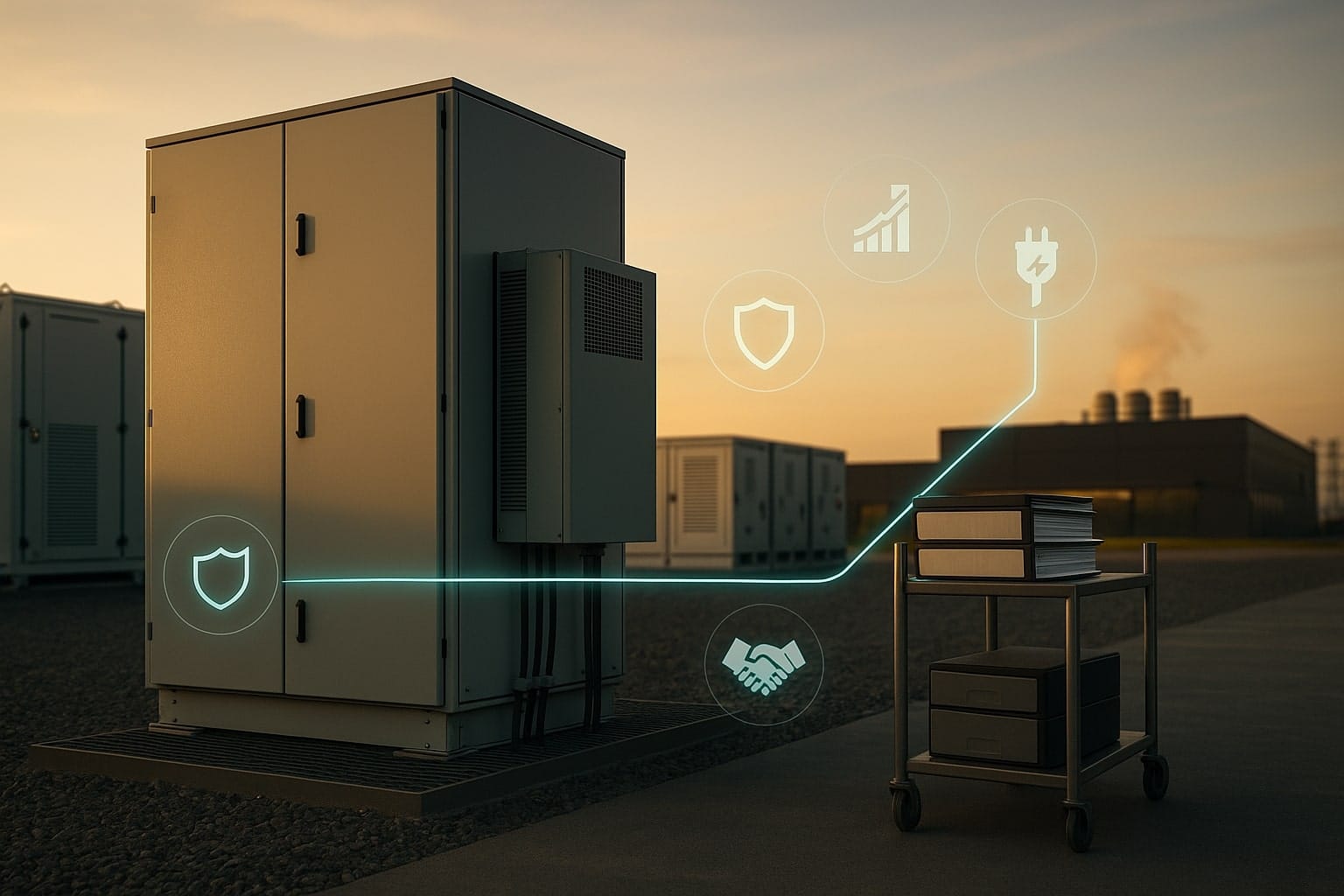Utah is poised to become a major hub for battery energy storage, thanks to a landmark investment by Clearway Energy Group. The company recently secured financing and initiated construction on the Honeycomb battery energy storage system (BESS) portfolio, a $605 million project designed to enhance grid reliability and integrate renewable energy into the state’s power infrastructure.
Comprising four 80-megawatt (MW) battery storage systems, each capable of storing and dispatching power for up to four hours, the Honeycomb portfolio represents a critical step in the state’s clean energy evolution. As the U.S. accelerates its transition toward a greener grid, projects like this one will play a pivotal role in stabilizing electricity supply, particularly in regions with growing solar and wind power generation.
Table of Contents
ToggleThe Scope of the Honeycomb Project
Located in Iron and Beaver counties, the Honeycomb BESS portfolio is strategically positioned adjacent to Clearway’s existing solar assets. The project will collectively provide up to 1,280 megawatt-hours (MWh) of energy storage capacity, allowing renewable energy to be dispatched when demand is high but generation is low—such as during the evening peak hours when solar panels are no longer producing electricity.
Clearway Energy, one of the largest renewable energy developers in the U.S., has been expanding its portfolio of solar, wind, and battery storage projects to support the country’s decarbonization goals. The Honeycomb project, once completed, will contribute significantly to Utah’s growing renewable energy infrastructure and improve the resilience of the Western power grid.
Financing and Key Stakeholders
Clearway’s financing for the Honeycomb portfolio comes from a consortium of major financial institutions, including KeyBanc Capital Markets Inc., CoBank ACB, DNB Bank ASA, U.S. Bancorp Impact Finance, National Australia Bank Limited, Bank of America, and Norddeutsche Landesbank Girozentrale. These lenders have provided the necessary capital to get the project off the ground and ensure its successful completion.
The energy generated and stored through Honeycomb is already accounted for under a long-term, 20-year tolling agreement with PacifiCorp, a leading utility provider in the Western U.S. This agreement ensures that the battery storage will be used efficiently, supporting the stability of the region’s energy supply while reducing reliance on fossil fuel-based power sources.
Economic and Employment Impact
Beyond its environmental benefits, the Honeycomb project is set to deliver economic gains for Utah. During construction, the initiative is expected to create approximately 50 jobs, with wages exceeding industry averages. Rosendin, the company overseeing construction, has committed to allocating around 15% of total worked hours to apprentices, fostering workforce development and training opportunities in the clean energy sector.
Over its operational lifetime, the Honeycomb portfolio is projected to contribute approximately $60 million in property and sales taxes, benefiting local schools, hospitals, and public services, reinforcing the economic advantages of large-scale renewable energy investments.

The Role of Battery Storage in the Clean Energy Transition
Battery storage has emerged as a cornerstone technology in the renewable energy transition. While solar and wind power have surged in recent years, their intermittent nature remains a challenge for grid operators. Batteries help address this variability by storing excess energy when production exceeds demand and releasing it when needed.
In the case of the Honeycomb project, the four-hour Tesla batteries will allow energy from Clearway’s nearby solar farms to be stored during the day and dispatched during peak evening hours. This will not only improve the efficiency of renewable power usage but also reduce dependence on natural gas peaker plants, which are traditionally used to meet spikes in electricity demand.
What Industry Leaders Are Saying
Steve Ryder, Chief Financial Officer of Clearway Energy, emphasized the company’s commitment to expanding battery storage solutions: “We are proud to expand our presence and economic commitment in Utah with the Honeycomb portfolio, which will bring our total fleet in the state to 869 megawatts. The Honeycomb battery energy storage systems represent not only a major investment in grid stability in Utah, but also advances Utah’s goal of energy security for the state.”
Utah’s leadership in energy innovation was also acknowledged by policymakers. U.S. Senator John Curtis highlighted the importance of projects like Honeycomb in securing a reliable, cost-effective, and clean energy future for the state. “Utah has long been a leader in energy innovation, and the Honeycomb BESS portfolio is another step forward in delivering clean, reliable, and dispatchable power to our communities,” Curtis noted.
A Growing Trend in Renewable Energy Investments
The Honeycomb BESS portfolio is part of a broader trend of increasing investment in battery storage nationwide. According to the U.S. Energy Information Administration (EIA), battery storage capacity in the United States has more than doubled since 2020, with projections indicating continued rapid growth. States such as California, Texas, and Arizona have led the way in deploying utility-scale battery projects, and Utah’s new investment marks its entry into this rapidly expanding field.
Moreover, federal policies such as the Inflation Reduction Act (IRA) have provided significant incentives for renewable energy and storage projects, further accelerating deployment. The IRA offers tax credits and financial support for clean energy infrastructure, making large-scale projects like Honeycomb more economically viable.
Conclusion
As the energy transition gains momentum, the role of battery storage in grid reliability and renewable energy integration cannot be overstated. Clearway Energy’s Honeycomb BESS portfolio stands as a testament to the growing importance of these technologies and the increasing willingness of investors, utilities, and policymakers to back large-scale clean energy projects.
With a $605 million investment, a robust financing structure, and a strategic approach to storage deployment, Honeycomb is set to reshape Utah’s energy landscape for decades to come. As renewable energy adoption accelerates nationwide, projects like this will be crucial in ensuring a stable, cost-effective, and sustainable electricity supply for the future.












